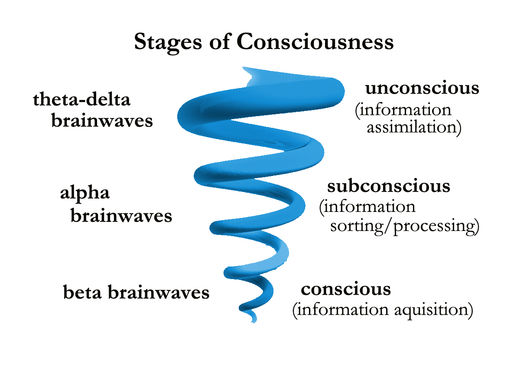"The interpreter presents the information but is not the one making any arguments or acting upon the knowledge that is shared," Morsella said. "Similarly, the information we perceive in our consciousness is not created by conscious processes, nor is it reacted to by conscious processes. Consciousness is the middle-man, and it doesn't do as much work as you think."
Morsella and his coauthors' groundbreaking theory, published online on June 22 by the journal Behavioral and Brain Sciences, contradicts intuitive beliefs about human consciousness and the notion of self.
Consciousness, per Morsella's theory, is more reflexive and less purposeful than conventional wisdom would dictate. Because the human mind experiences its own consciousness as sifting through urges, thoughts, feelings and physical actions, people understand their consciousness to be in control of these myriad impulses. But in reality, Morsella argues, consciousness does the same simple task over and over, giving the impression that it is doing more than it actually is.
"We have long thought consciousness solved problems and had many moving parts, but it's much more basic and static," Morsella said. "This theory is very counterintuitive. It goes against our everyday way of thinking."
According to Morsella's framework, the "free will" that people typically attribute to their conscious mind -- the idea that our consciousness, as a "decider," guides us to a course of action -- does not exist. Instead, consciousness only relays information to control "voluntary" action, or goal-oriented movement involving the skeletal muscle system.
Compare consciousness to the Internet, Morsella suggested. The Internet can be used to buy books, reserve a hotel room and complete thousands of other tasks. Taken at face value, it would seem incredibly powerful. But, in actuality, a person in front of a laptop or clicking away on a smartphone is running the show -- the Internet is just being made to perform the same basic process, without any free will of its own.
The Passive Frame Theory also defies the intuitive belief that one conscious thought leads to another. "One thought doesn't know about the other, they just often have access to and are acting upon the same, unconscious information," Morsella said. "You have one thought and then another, and you think that one thought leads to the next, but this doesn't seem to be the way the process actually works."
The theory, which took Morsella and his team more than 10 years to develop, can be difficult to accept at first, he said.
"The number one reason it's taken so long to reach this conclusion is because people confuse what consciousness is for with what they think they use it for," Morsella said. "Also, most approaches to consciousness focus on perception rather than action."
The theory has major implications for the study of mental disorders, Morsella said. "Why do you have an urge or thought that you shouldn't be having? Because, in a sense, the consciousness system doesn't know that you shouldn't be thinking about something," Morsella said. "An urge generator doesn't know that an urge is irrelevant to other thoughts or ongoing action."
The study of consciousness is complicated, Morsella added, because of the inherent difficulty of applying the conscious mind to study itself.
"For the vast majority of human history, we were hunting and gathering and had more pressing concerns that required rapidly executed voluntary actions," Morsella said. "Consciousness seems to have evolved for these types of actions rather than to understand itself."
Journal Reference:
- Ezequiel Morsella, Christine A. Godwin, Tiffany K. Jantz, Stephen C. Krieger, Adam Gazzaley. Homing in on Consciousness in the Nervous System: An Action-Based Synthesis. Behavioral and Brain Sciences, 2015; 1 DOI: 10.1017/S0140525X15000643





self proclaimed expert scribblers published by another self proclaimed collective of know nothings, does in point of fact, actually mean nothing. These are members of a sick and perverted cult of reductionist, who couldn't find their way out of paper bag having been educated to the point of imbecility and are spouting dangerous nonsense which has an agenda. Tread carefully is my suggestion.
Consciousness isn't inside the body. The body is a device for consciousness, not the other way round. This is why Einstein said that reality is all an illusion, just a very solid one. We know how this works and have known how for thousands of years.
Recently, though not acknowledged by the self proclaimed experts, probably because they are idiots, our understanding of how the concrete reality is formed before our eyes has been dis-entangled with advanced
tests of the double slit experiment, commonly known as Younge's experiment.
One can read the delayed choice quantum experiment and, if they understand reality and Universe adequately, will then see that what is really happening is that the mind creates reality before the thought itself enters the body. In this way, and only in this way, can Universe create this world we know and see as solid 3 dimensional world.
Life is an experiment to which our souls enter in to. This is ancient knowledge that these so-called scientists have rejected and yet again, here at each turn the more we understand about the true nature of reality, the more it vindicated the ancient understanding of life and human species place in Universe.